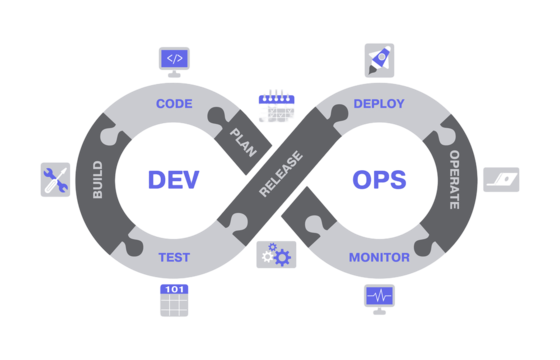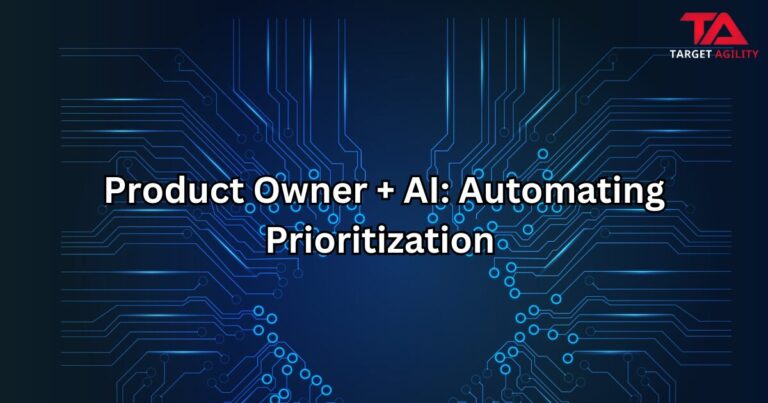When it comes to creating and delivering software, two popular methods are Agile and DevOps. Both help teams work better and faster, but they do it in different ways. Let’s break down what each one is and how they are different.
What is Agile?
Agile is a way of working that focuses on being flexible and working together as a team. Instead of trying to build the entire product all at once, Agile teams work in small steps, called sprints, which usually last 1 to 4 weeks. At the end of each sprint, they deliver a small, working part of the product.
Agile also involves getting feedback from customers regularly so the team can make improvements as they go. The main idea is to make changes quickly based on what users need.
The key values of Agile are:
- People and teamwork are more important than following strict processes.
- Delivering working software is more important than writing lots of documentation.
- Collaborating with customers is more important than following contracts exactly.
- Being able to change plans is more important than sticking to one set plan.
In short, Agile is all about working in small steps, delivering pieces of the product often, and being open to change.
What is DevOps?
DevOps is a way of working that helps teams build, test, and release software faster and more reliably. It focuses on improving the communication between two groups: the development team (the people who build the software) and the operations team (the people who manage and support the software after it’s built).
The main goals of DevOps are:
- Working together: DevOps encourages developers and operations teams to work as one team.
- Automating tasks: By automating repetitive tasks like testing and deployment, teams can work faster and make fewer mistakes.
- Continuous improvement: DevOps teams constantly monitor the software to find and fix problems as soon as possible.
- Managing infrastructure as code: DevOps uses tools that let teams manage things like servers and databases just like they manage the software code. This makes things more organized and easier to control.
DevOps is about making sure the whole process— from writing code to keeping it running— is smooth and fast.
How are Agile and DevOps Different?
1. What They Focus On
- Agile focuses on how the development team builds the software. It’s about creating small, working parts of the software quickly and getting feedback.
- DevOps focuses on the entire process, from building the software to making sure it works properly once it’s in use. It’s about improving speed and reliability.
2. Who’s Involved
- In Agile, the focus is on the development team, working in sprints to deliver updates.
- In DevOps, both the development and operations teams work closely together to make sure the software is built, tested, and runs well.
3. Work Process
- Agile works in short cycles (sprints), delivering small pieces of software every few weeks.
- DevOps uses Continuous Integration and Continuous Delivery (CI/CD), which means code is tested and released in smaller, more frequent updates.
4. Use of Automation
- Agile doesn’t rely heavily on automation, though it can use some tools to help with testing or tracking progress.
- DevOps depends a lot on automation to speed up testing, deployment, and managing infrastructure.
5. Getting Feedback
- Agile gets feedback from customers after each sprint to improve the product.
- DevOps gets feedback from both users and the software itself through constant monitoring, helping teams catch and fix issues fast.
6. Company Culture
- Agile is mainly about creating a flexible, adaptable culture in the development team.
- DevOps aims to build a culture where both developers and operations work closely together to deliver software smoothly.
Can Agile and DevOps Work Together?
Yes! In fact, they often go hand in hand. Agile helps teams develop software quickly, while DevOps ensures that the software is released and maintained properly. For example, a team might use Agile to manage how they build software and use DevOps to manage how that software is tested, deployed, and run in real life.
Together, Agile and DevOps can help teams create software faster and more reliably.
Conclusion
Agile and DevOps both aim to improve how software is developed and delivered, but they do it in different ways. Agile focuses on the development team, working in short cycles and delivering small updates. DevOps focuses on the whole process, from development to deployment, using automation and better teamwork between developers and operations. When combined, Agile and DevOps can help teams deliver better software faster and more efficiently.












